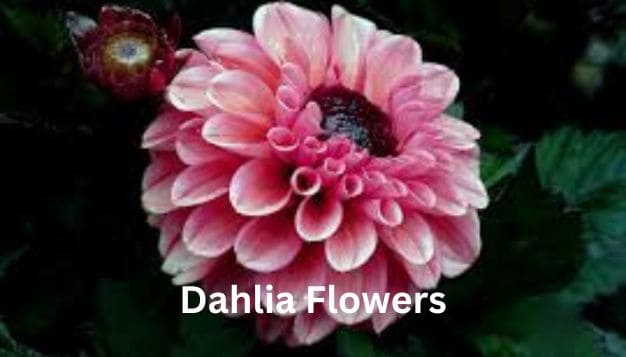Dahlias, with their vibrant colors, intricate petal patterns, and diverse forms, stand as enchanting ambassadors of the botanical world. Originating from the mountainous regions of Mexico and named after the Swedish botanist Anders Dahl, these flowers have captured the hearts of garden enthusiasts, florists, and artists alike. As a genus boasting thousands of cultivars, Dahlia flowers have become a symbol of elegance, resilience, and the boundless creativity of nature.
History and Origin of Dahlia Flowers
The history of the Dahlia dates back to the 16th century when Spanish explorers first encountered the flower in the gardens of the Aztecs. Revered by the indigenous people for its beauty and symbolic significance, the Dahlia soon found its way to Europe, where it underwent centuries of hybridization and cultivation. By the 19th century, Dahlias had become a popular ornamental plant, finding a place in the gardens of royalty and commoners alike.
Types of Dahlias
There are fifteen main types of dahlias, from tiny bedding dahlias under 12 inches to giant specimens soaring 8 feet tall or more!
- Bedding dahlias – compact plants under 1 foot tall, ideal for borders and containers
- Anemone-flowered – a center disc surrounded by one or more rows of ray florets
- Collarette – one or two rows of ray florets like a cactus dahlia, but with a collar of small florets around the center disc
- Waterlily – layers of broadly oval or curved petals that overlap at the center, resembling a waterlily
- Decorative – broad, flat, evenly arranged petals
- Cactus – pointed, tapered, sharply twisted or curved narrow petals
- Semi-cactus – mix between decorative and cactus types
- Peony – flower petals are loosely arranged rather than forming a solid bloom
- Stellar or single – daisy-like with one row of petals surrounding central disc
- Pompon – small, very double spherical blooms
- Ball – fully double flowers that resemble pom pons but are much larger
- Miniature ball – compact growing plants under 2 feet with small, ball-shaped flowers
- Mignon single – tiny daisy-like blooms on compact plants
- Liliput pompons – very diminutive pom pon style blooms
- Fimbriated – petals have frilly or notched edges
In addition to this diversity of forms, dahlias have been hybridized in every color except blue and pure black. Most common are shades of red, pink, orange, yellow, white, and purple. Many bicolors, blends, and variegations like stripes or splashes are available.
Botanical Characteristics
Dahlias belong to the Asteraceae family, which includes other well-known flowers such as sunflowers and daisies. What sets Dahlias apart are their diverse shapes and sizes, ranging from petite, single-petaled varieties to large, multi-layered blooms resembling intricate pom-poms. The flowers come in an array of colors, including shades of red, pink, purple, yellow, orange, and white, providing a kaleidoscope of options for floral enthusiasts.
Categorization and Classification
With over 40 species and thousands of cultivars, Dahlias have been classified into various groups based on their flower forms. These groups include the Single-flowered Dahlias, Anemone-flowered Dahlias, Decorative Dahlias, Cactus Dahlias, Waterlily Dahlias, and many more. Each group exhibits unique characteristics, making Dahlias a versatile choice for gardeners seeking a wide range of floral displays.
Cultural Significance
Beyond their aesthetic appeal, Dahlias hold cultural significance in different societies. In Mexico, the flower is a national symbol and is often associated with celebrations and festivals. The Aztecs, who originally cultivated Dahlias, considered them a symbol of the sun, and the flowers were used both for decorative purposes and as a source of food.
Symbolism and Meanings
Dahlias have acquired various symbolic meanings over the years, adding depth to their allure. While they are generally associated with themes of beauty, elegance, and dignity, specific colors convey different messages. For instance, red Dahlias are often linked to strength and power, while white Dahlias symbolize purity and innocence. Understanding these meanings can add a thoughtful layer to the gifting and arrangement of Dahlias in different contexts.
Cultivation and Care
The cultivation of Dahlias requires attention to detail and a commitment to their specific needs. These flowers thrive in well-drained soil, ample sunlight, and regular watering. The process of planting, staking, and pruning is crucial for optimal growth and the development of robust blooms. Gardeners must also be aware of potential pests and diseases that can affect Dahlias, taking preventive measures to ensure the health of these exquisite flowers.
Dahlia Festivals
Around the world, Dahlia festivals attract flower enthusiasts, gardeners, and tourists alike. These festivals showcase the diversity of Dahlias through exhibitions, competitions, and educational programs. Notable events such as the Swan Island Dahlia Festival in Oregon, USA, and the National Dahlia Society Annual Show in the United Kingdom draw crowds eager to witness the beauty and craftsmanship of these captivating blooms.
Art and Literature
Dahlias have inspired artists and writers across centuries, finding their way into paintings, poems, and literature. From the detailed botanical illustrations of the 18th century to modern abstract interpretations, Dahlias have left an indelible mark on the world of art. Their inclusion in literature and folklore further underscores their significance, with authors using the flower as a metaphor for love, beauty, and the fleeting nature of life.
Conclusion
In the vast realm of botanical wonders, Dahlias emerge as timeless protagonists, captivating the senses with their kaleidoscopic hues and intricate forms. From their humble beginnings in the Aztec gardens to gracing the most prestigious floral exhibitions of the modern era, Dahlias continue to enchant and inspire.
As symbols of beauty, resilience, and cultural richness, these flowers weave a narrative that transcends borders and connects humanity to the ever-evolving tapestry of the natural world. Whether adorning gardens, bouquets, or artistic creations, Dahlias stand as living testaments to the infinite creativity and diversity of nature.

